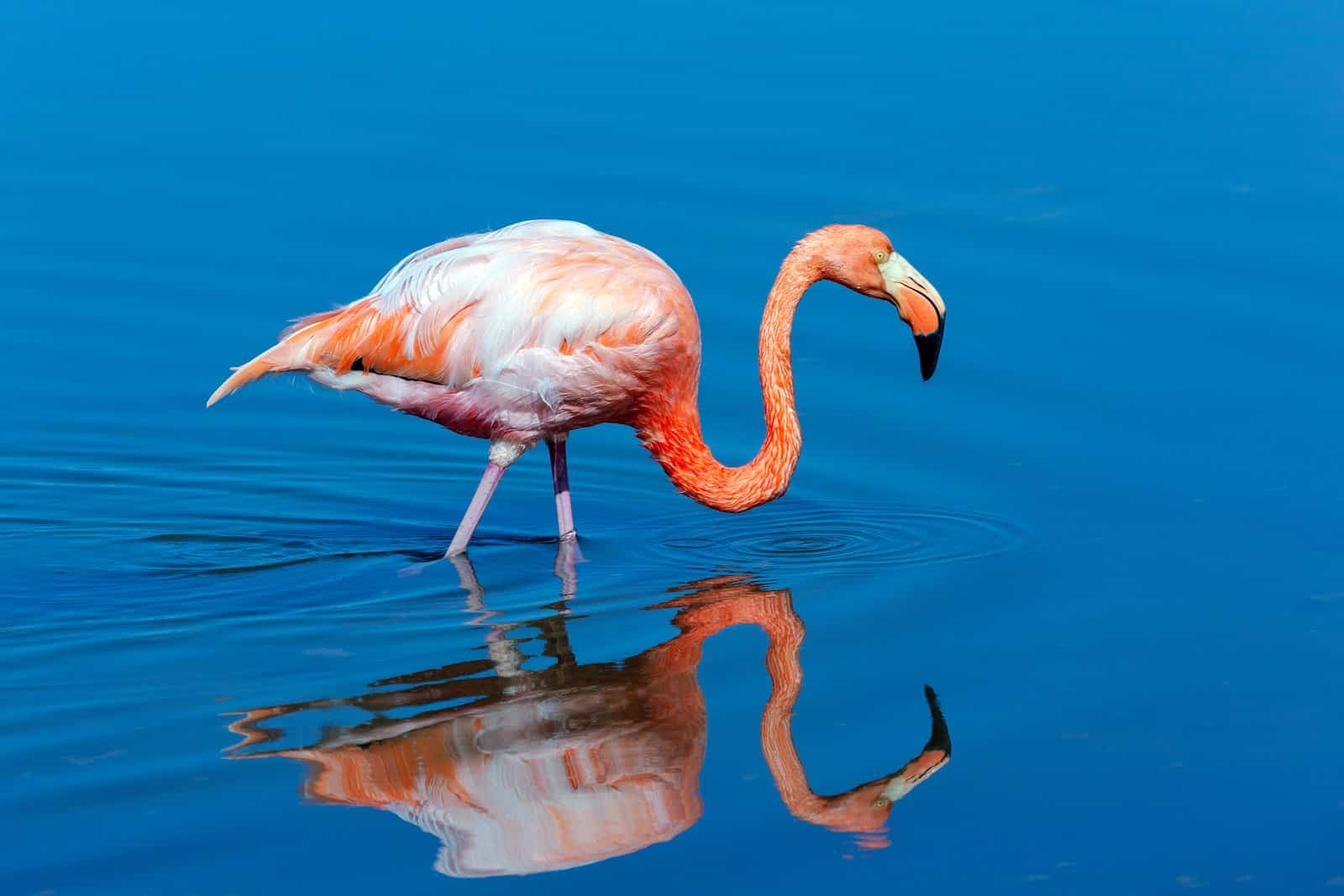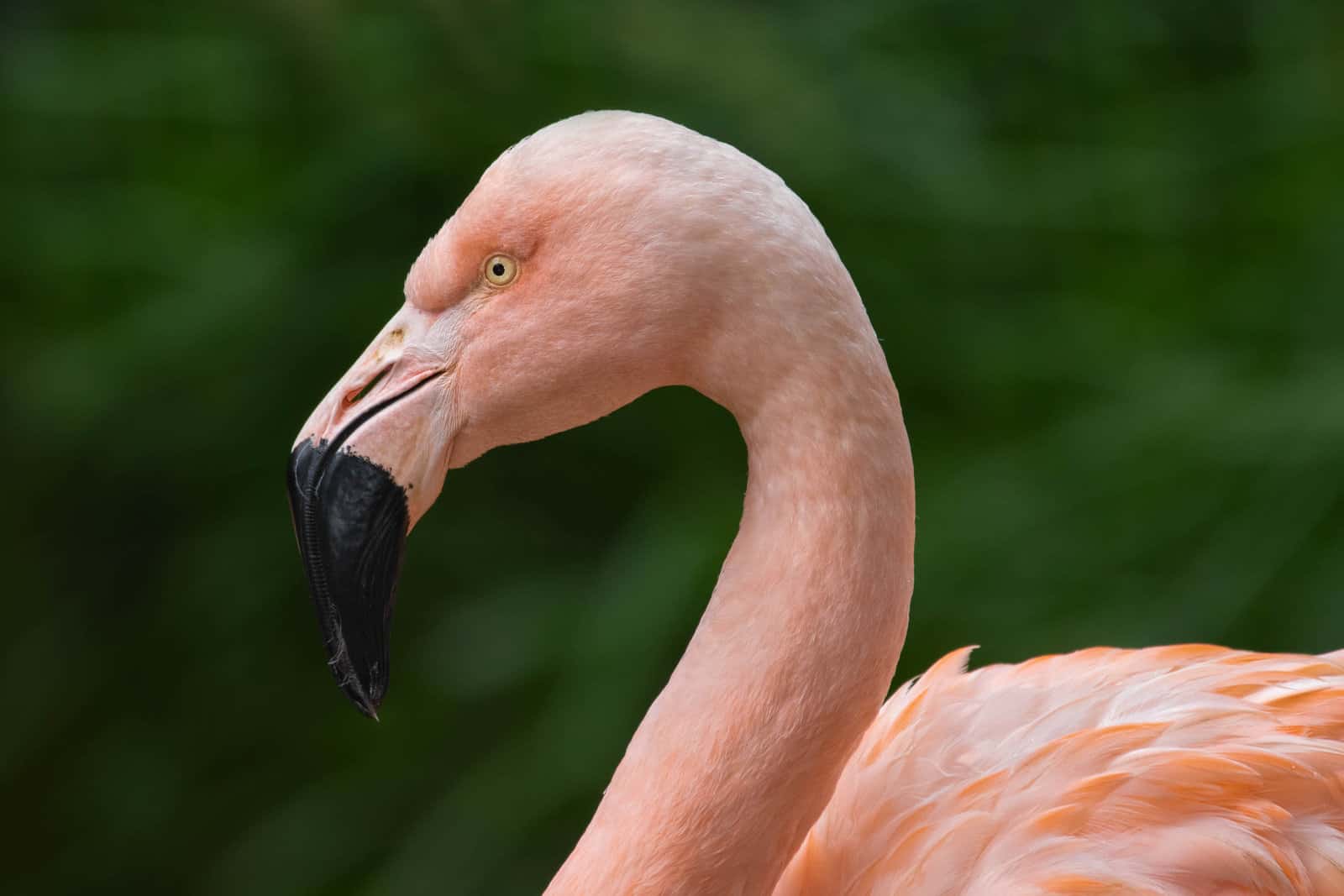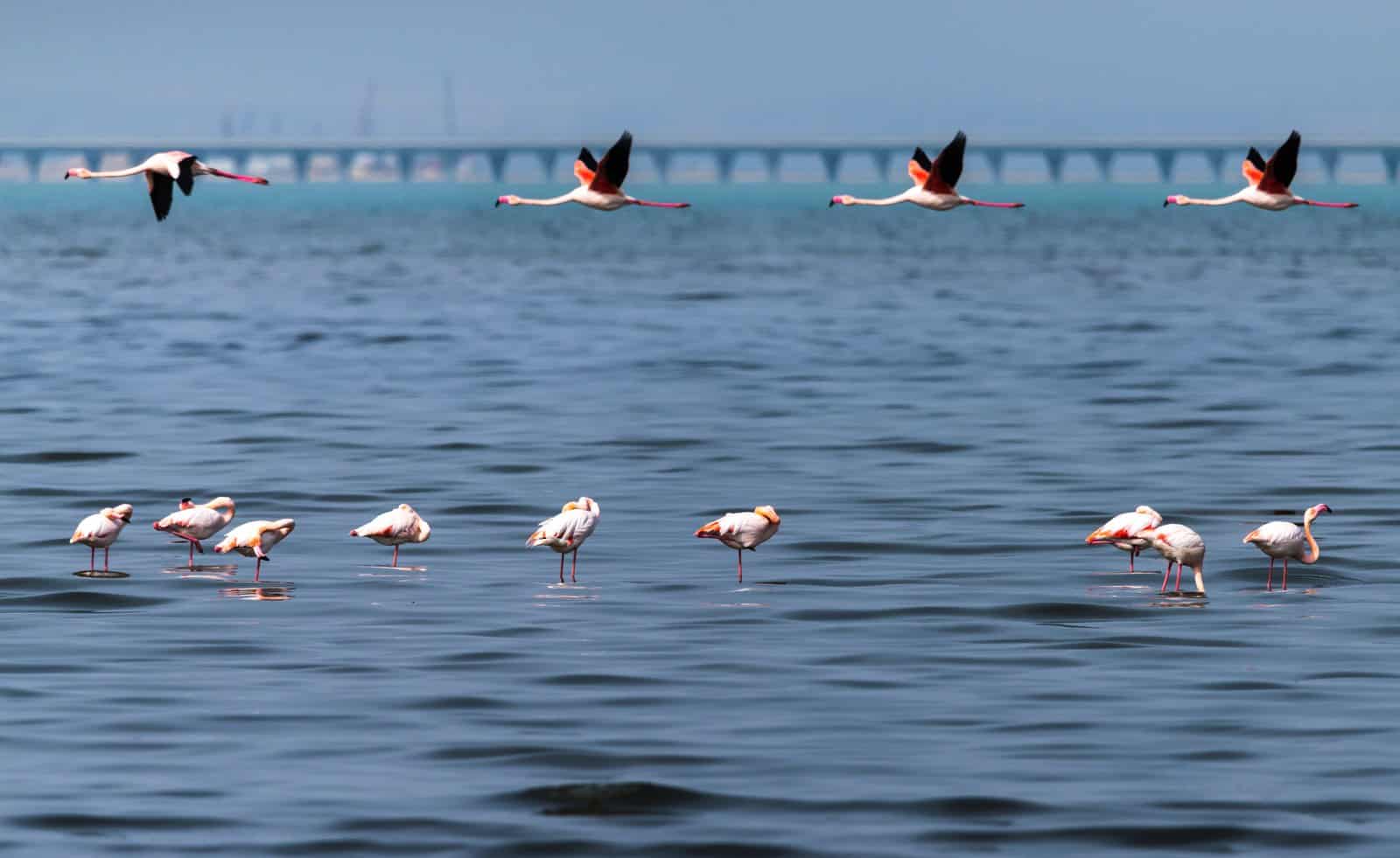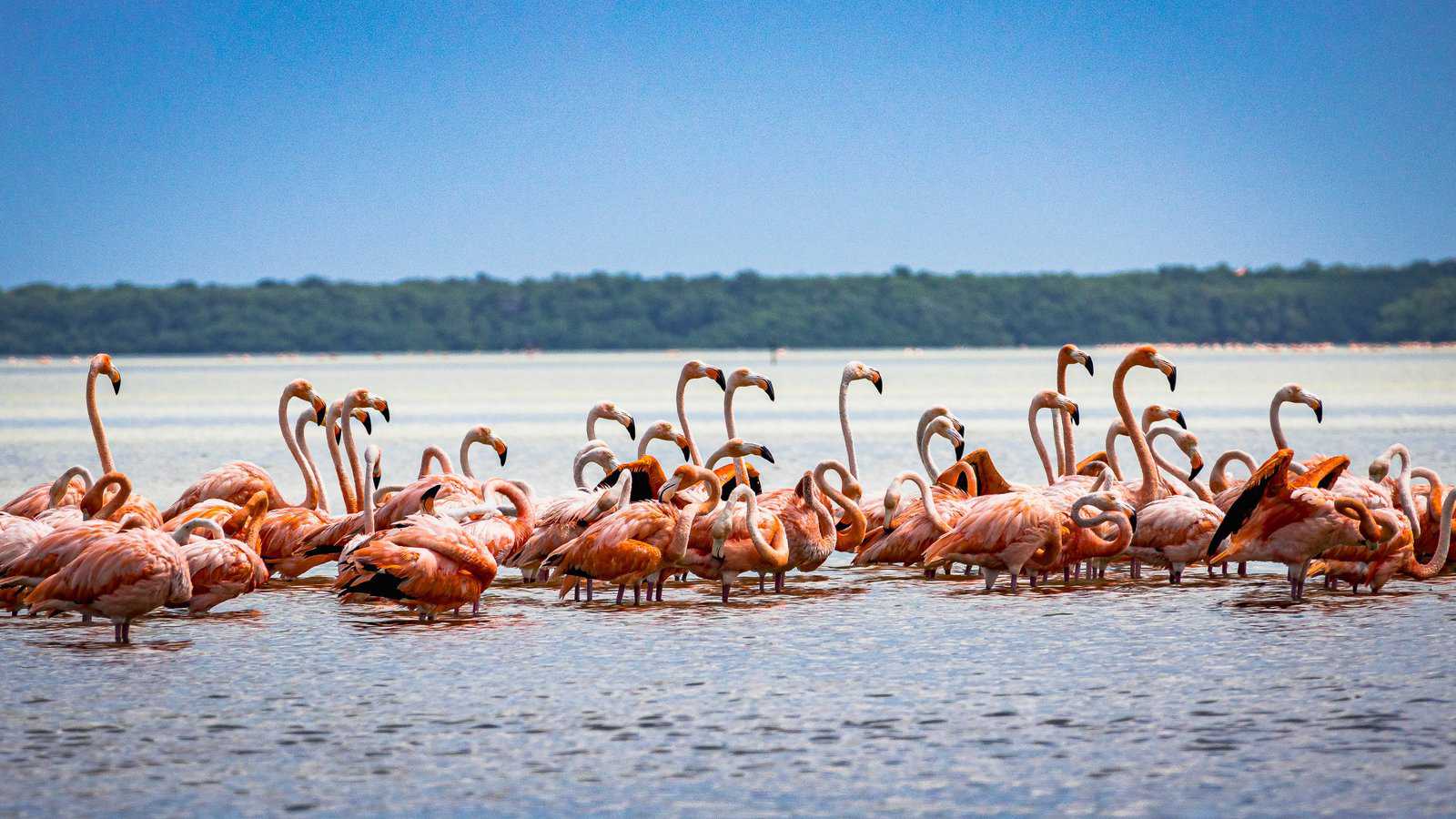
Your 101 Guide to The Flamingos’ Life: All You Need to Know About The Dazzling Pink Birds
Birds are beautiful creatures that capture one’s attention when they freely fly in the open sky. While all birds are truly wonderful, some of them happen to just stay on the ground, and this brings us to the fascinating flamingos. The flamingo is a special kind of bird; it has wings, but they usually don’t fly, and its colour is uniquely beautiful.
The pinkish hue isn’t the only thing that makes flamingos appealing to the eye. Their other physical characteristics are also interesting, not to mention their friendly nature and fascinating facts that may surprise you. Today, we’re casting light on this rare and beautiful bird that is the flamingo, learning all we can about it.
The Glaring Appearance of Flamingos
Flamingos’ appearance is quite gleaming that people from over the world travel to observe. These birds’ heights can reach 140-150 cm, depending on their species. However, the smallest specie is no less than 80 cam. They have long legs that help them stay afloat and exceptionally long necks that use upside down for eating.
The weight of a flamingo can reach up to 4 kilograms, which is why they don’t fly, as their relatively heavy weight compared to their wingspan doesn’t support them. Their tails are considered relatively short for a bird of that height and weight.
We all associate flamingos with the colour pink, yet the truth is their authentic colour is just pale greyish white. Flamingos are like shrimp; they get their pink colour from the food they eat. They mainly feed on algae, which contains a pink-like pigmentation that appears on their outer feathers.
The Flamingos’ 6 Different Species
Flamingos have different species, each found in a different region, making the flamingo population almost scattered across the planet. Mostly, you find a flamingo nesting somewhere in tropical or subtropical areas, where there are beaches spanning long distances, yet the temperature is high all year round.
This means that the countries where you can spot flamingos are mainly in South America, especially the Caribbean. However, some species live in Africa and the Middle Eastern region. Let’s take a walk through the six species of flamingos there are.
Lesser Flamingo
The lesser flamingo is the smallest specie of flamingo, not reaching more than 2 kilograms in weight. They have large bodies, long necks, and relatively small heads. This specie lives mainly in Western India and sub-Saharan Africa. Interestingly, they can live up to 50 years.
The lesser flamingo is threatened, for they’re significantly reducing in population for being the main food for wild animals like cheetahs, lions, and leopards. Hyenas and baboons occasionally feed off lesser flamingos too.
American Flamingo
As the name suggests, American flamingos are native to South America and are sometimes called Caribbean flamingos. This specie lives in shallow waters and is most abundant in Mexico. It’s also deemed one of the largest specie of flamingo, with the tallest necks and legs.
The American flamingo isn’t threatened like their peers, the lesser flamingos, thanks to its environment. They live on islands that aren’t suitable for many animals. Thus, their natural predators are few. However, native South American animals like feral pigs, bobcats, and minks may occasionally hunt a flamingo or two for their meals.

Andean Flamingo
The Andean flamingo is quite close to the American ones regarding location. They also live in South America but prefer being in the high Andes mountains, hence the name. Andean flamingos are among the largest flamingo species, even larger than the American ones, reaching 110 centimetres in height and almost 5 kilograms in weight. However, they aren’t the biggest.
The natural habitat of Andean flamingos embraces other animals, including Geoffrey’s cats and Andean foxes, which are their main predators. However, they aren’t huge threats since they don’t usually co-exist in the same region, allowing the Andean flamingo to live peacefully among its peers.
Greater Flamingo
Greater flamingos were named as such for being the largest among all the flamingo species. It’s even larger than the Andean flamingo. Also, being widespread across different regions is another reason behind its naming. This flamingo bird lives in the Middle East, Africa, Southern Europe, and the Indian subcontinent.
The appearance of a greater flamingo is quite distinctive compared to other ones. Its legs are relatively elongated, and its necks are lean and curved. Their beaks bend further downward, appearing bigger and longer than other species. The greater flamingo is one with the most diminutive predators. Gulls, crows, and raptors may feed off their young eggs but not adult ones.
Chilean Flamingo
The Chilean flamingo lives in Chile; however, it’s not the only place it lives. This specie also lives across different countries in South America, including Bolivia, Peru, Argentina, and Brazil. However, it’s the most abundant in Chile, which explains how it got its name. The Chilean flamingo
It’s also one of the large species, and its pink hue is a bit lighter than other flamingo species. Their beaks also have more black than their peers, and their legs are grey. Interestingly, young Chilean flamingoes never get their pink pigmentation until they mature. They stay grey for most of their young years and turn light pink later in life.

James’s Flamingo
The last specie of flamingos go by James’s flamingo or Puna flamingo. James’s flamingo lives in the upland of the Andes in Chile, Bolivia, Argentina, and Peru, just like the Chilean flamingos. However, this specie prefers high altitudes and a darker pink hue than the Chilean flamingo.
James’s flamingos were named after the British naturalist who devoted his time and efforts to studying this bird, Harry Berkley James. They’re also known to be the rarest species of flamingos, like the lesser flamingo, and they are both deemed the smallest in size and shortest in height compared to other species.
10 Interesting Facts About Flamingos
Flamingos are already attractive and exciting, especially since they aren’t like those animals that are everywhere to be found. You have to fly all the way to their native regions to see them gracefully walking over ponds and bonding with one another. Even more, you can learn many interesting facts about flamingos, with some that will blow your mind away, so let’s get started.
1. Born Dull Grey
The pink hue of these birds is one element that makes them fascinating and appealing to watch. However, we already stated that flamingos get their pink pigmentation from the kind and colour of the food they eat, usually red underwater algae. This means that they don’t really appear pink when they’re first born, right?
Exactly! A baby flamingo is born with a dull grey colour. They start gradually turning light or bright pink after eating and drinking food with the pigment. In fact, Chilean flamingos’ young remain grey throughout their childhood years.
2. Their Milk is Bright Red
These beautiful birds like to eat red-coloured food in order for their feathers to get this perfectly pink shade. Well, they also happen to make red food themselves. Female flamingos produce milk with a red hue to feed their little ones. It’s known as crop milk, which is the kind of milk that most birds secrete in their digestive tract, known as the crop.
The red milk aids in giving the young birds their pink shade over time. They come into the world with dull grey feathers that seem sort of colourless. However, their moms offer them nutritious milk, turning them dazzling pink birds.
3. Are Super Friendly
The animal kingdom embraces different kinds of animals, each with its characteristics. Some prefer living solo in secluded areas, while others prefer living among their family and friends. Flamingos are social animals; they like to hang out together and spend most of their time bonding with each other.
Not only is this bird sociable with its peers, but it’s also interactive with humans. Many studies have found that flamingos are peaceful and submissive. They can even create friendships that last for a lifetime. However, some species fall more into the aggressive type, being loud and unfriendly sometimes.
4. Live in Muddy Nests
While shallow waters and ponds are the flamingos’ primary habitat, they also resort to muddy nests. The flamingos are capable of building nests created from a pile of mud. They make them on the sidelines of waterways, using them for warming their eggs before they hatch.
Every mound of mud has a hole in the middle, where the female flamingo lays her egg and sits on it. Interestingly, the males barge in and take turns in sitting on the egg with their female partner. This way, they ensure the egg stays warm until the time comes for it to crack and their little one enters the world.
5. They Do Fly!
The flamingos seem like too large birds to take to the air, but they actually can. Most flamingos prefer using their legs over their wings, but if circumstances push them toward it, they’ll use their wings and flee. Even more interesting, they can fly for pretty long distances; it’s just that they choose not to use their wings.
This brings us to the question; if flamingos can fly, why do they stay captivated in zoos? Unfortunately, those birds who end up in zoos have their feathers trimmed. This way, the zookeepers ensure they won’t go anywhere, and people will still enjoy watching and feeding them. It’s a sad fact, though, for animals don’t belong in zoos.

6. Don’t Have Teeth
Flamingos, like all birds, don’t have teeth. Their genes are wired that way; they don’t form teeth during maturing. Instead, they use their pointed beaks and ridges to pick up food. Even more interestingly, these outer ridges help them filter their food from the water before swallowing it.
These dazzling birds can filter everything inside their mouths before swallowing them. Especially since they live in shallow waters from which they grab their food, primarily red algae, and they naturally grip some waters along the way. Although there’s nothing wrong with swallowing the water with the food, they show off their skills by letting the water out and keeping it inside.
7. Are Tough Birds
Birds generally seem like delicate creatures with small bones and fluffy feathers. The flamingos are no exception; they look silky and weak, especially with their thin elongated legs. However, this is not the truth about the flamingos. If anything, they’re known to be one of the toughest animals alive.
The flamingo is known to be fierce and resilient and capable of surviving in harsh conditions. This bird can also swim its way through hyper-saline lakes, waters with extremely high salt content. The amount of salt they can endure is destructive for humans, and it can make our skins fall off. Moreover, the flamingos can take boiling water in their throats without fresh water nearby. So, don’t let their dainty physical traits deceive you.
8. Lots of Flamingos Are Flamboyance
We’re sure you can track a metaphor, but this fact is literal. The flamingos are truly flamboyant, and they easily capture the attention of the beholders, given their exceptional beauty. However, we’re here referring to what a group of flamingos is called, and it is genuinely a flamboyance.
This is the same as we say, “a flock of birds” or “a murder of crows”. With flamingos, we say “a flamboyance of flamingos.” and that’s interesting, for we also believe that when a group of these pretty pinkish birds come together, they look flamboyant.

9. Sleep While Standing
Many animals tend to sleep while standing up, including elephants, horses, and zebras. They have a great might that makes them endure standing up through the night while shutting down their eyes. Flamingos are among those animals, too; they sleep while standing on one leg, which seems quite athletic yet graceful.
As a matter of fact, flamingos are quite tough birds that can endure a lot of harsh conditions, so standing up doesn’t seem like a big deal for them. Besides, they live on caustic salt lakes, which is another reason they stay on their legs; they don’t have anywhere to sit down. More excitingly, they rest their heads on their backs when they sleep while balancing on one leg.
10. Flamingo Is Latin for Fire
Lastly, let’s talk about those feisty birds got their name. The word “flamingo” is an old Latin word that means “fire.” It makes sense; their bright pink feathers look like a raging fire that can never be put out. In Spanish, fire is known as “Fuego,” derived from the old Latin word.
Besides, Spanish is a Latin-based language and the first language of most countries where flamingos are found. These countries include Chile, Bolivia, Argentina, and Peru, which all speak Spanish. Thus, it makes sense to name those birds in the language of the region where they live.
The flamingos are deemed the strangest yet the most beautiful birds ever. They possess a lot of unique traits that make them attractive. They gracefully walk over shallow waters, allowing us to observe them in awe and wonder. So, the next time you see a flamingo, pay close attention to its exquisite details.
If you enjoyed learning about this stunning animal, why not check out more exciting facts about other animals: Koalas, Land Animals, Sharks, Raccoons, Moon and Sun Bears, Rats, Chickens, Cats, Pandas, Monkeys, endangered animals, waterfowl and Whales.
Why not subscribe to our LearningMole Library for as little as £1.99 per month to access over 2100 fun educational videos.


Leave a Reply